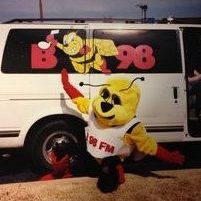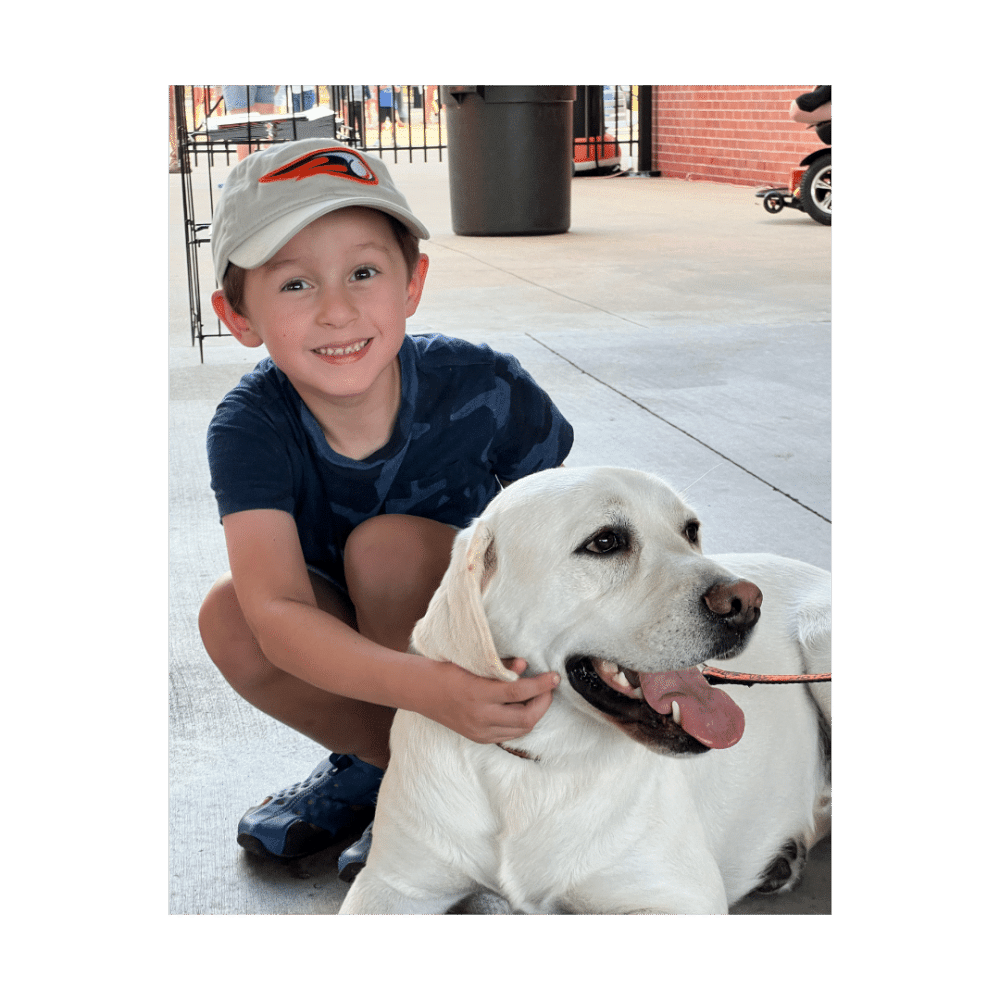I hope everyone enjoyed their first official weekend of football season. 🏈 I love this time of year — and it’s not just because the unbearable Tennessee summer is starting to finally cool off. College football (Go Blue!) and the NFL are back in full swing, which means it’s time to dust off the jerseys, raise the team flags, and play our fight songs on repeat. Basically, everything I love about superfandom is on display. 🤩
In today’s newsletter, I’m breaking down one of the best superfan strategies that you can borrow from your favorite sports teams and implement into your own business: a mascot! Is a mascot right for every business? No. But when deployed intentionally, they can earn you a lot of goodwill — and boost brand awareness and loyalty in a big way!
If you’ve attended one of my keynotes before, you might remember that I got my first job in the entertainment industry as a mascot! When I was sixteen, I spent an afternoon at my local radio station “job shadowing” for a school assignment. By the end of the day, I was begging the promotions manager for a job, and was thrilled when she said “You look like you’re about the right size for our mascot suit.” I said yes on the spot and started showing up as Sting the Bee, B98’s beloved mascot, at every furniture store grand opening, rodeo, state fair, and car dealership within a fifty-mile radius.

Young kids always wanted to give me a high-five and pose for a picture together. It was a great way to raise brand awareness for the station and interact with loyal listeners and their families.
Working as Sting the Bee not only ignited my passion for the music industry (and ruined any chances of me ever having a “normal” job), but it also taught me a few lessons about the power of mascots and the important role they play for a brand:
They tell your brand’s story
Getting clear on your brand story is the critical first step in creating superfan customers. With a well-defined character and personalized features, mascots can humanize your brand and further reflect its core values.
Sports teams are known for the mascots that embody the characteristics of their communities. One of my favorite examples is the Nebraska Cornhuskers, appropriately named after the state’s leading product. The term ‘husker’ is a callback to the way corn used to be harvested by hand before big machinery took over.
On game days, you’ll see the official Cornhusker mascot, Herbie Husker, wearing a red cowboy hat, red work shirt, blue jeans, and workboots to accurately represent the local community.
Would fans be just as passionate about the football team if they were something generic, like the Nebraska Wildcats? Maybe. But the unique choice of the Cornhusker encapsulates the hardworking people and school history while invoking a sense of pride that only Nebraska can claim.
Even if your brand isn’t a sports team, you can utilize a mascot to tell your story. The muscular and charming Mr. Clean perfectly portrays the tough-on-stains, chemical-free products made by Proctor & Gamble, while Credible.com’s new Credibull depicts the no-nonsense, trustworthy finance marketplace.
They help you create stronger bonds with your customers
To create superfans, you’ve got to elevate your brand experience beyond just the product or service you’re selling; you want your customers to feel like they’re a part of something bigger.
As Sting the Bee, I was constantly attending local events to greet our listeners and take fun pictures with their families. By supporting business openings and town events, Sting the Bee helped the radio station further ingratiate itself with its audience and form a stronger bond. B98 became more than just that local station without commercials during rush hour; it was the station whose mascot high-fived someone’s toddler and made the family trip to the furniture store that much more bearable.
For sports teams, mascots can be the one consistent figure to span many generations of fandom. Legendary athletes will retire or get traded (yes, one day farrrr into the future, young Patriots fans won’t identify with Tom Brady). Your team could even relocate cities. But the mascot is the one steady figure that connects your brand story to all of your customers’ stories, regardless of who is playing for the team or how well they’re performing (unless you’re a Cleveland Guardians or Washington Commanders fan, but that’s a topic for another day).
Mascots don’t need to have an in-person presence to connect with your customers, though. The Pillsbury Doughboy reaffirms the brand’s fresh ingredients as he ‘pops’ out of the can in his commercials (his original name was Poppin’ Fresh!). His blue eyes, warm smile, and classic giggle enforce a sense of wholesomeness to consumers. At one point, the Pillsbury Doughboy received 200 fan letters a week and was getting thousands of requests for autographed photos! Can you even name another pre-made dough option at the supermarket? Probably not.
They make you more memorable
Since mascots help tell your origin story, they’re inherently going to make your brand story more memorable. With contextual details and emotions, a good mascot can make us think and feel in ways that brands alone cannot.
Can you think about Geico without seeing the green gecko and hearing its smooth, cockney accent in your head? I bet you’re also replaying his infamous slogan, too: “15 minutes could save you 15 percent or more on car insurance.” Conversely, whenever you see a little gecko in the wild, you probably think of Geico, right?
The idea for the gecko mascot stemmed from the common mispronunciation of ‘Geico.’ Geico’s advertising agency cleverly capitalized on this brand issue and turned it into a mascot that would eventually win America’s favorite advertising icon in 2005.
Now, consumers don’t just associate geckos with “that insurance company” – they associate them with Geico. And, when you think of Geico, you aren’t thinking of the car accident you got into last year, you’re thinking of the relatable and funny reptile that wants to save you money.
There are hundreds of other insurance companies vying for our attention. Employing a mascot can help you strategically position your brand in the minds of your customers and create a memorable story that will be shared.
They offer additional revenue streams
In addition to making your brand more memorable, mascots can open up new revenue sources for your business. For example, there may be opportunities for merchandising, licensing, or even social media deals.
We live in Franklin, TN which is about 90 minutes from Bowling Green, KY, where the minor league baseball team, the Hot Rods, plays. My husband and I love to take our two boys to the games – they even prefer to watch the Hot Rods over the Nashville-based Sounds. Why? Because of Turbo, the official bat-dog of the team!
Here’s my son, Kadoh, posing with real-life Turbo at a game this summer! Turbo is a sweet labrador retriever who happily takes pictures with his biggest fans.

When we visited the merch booth on our way out of the ballpark, guess what Kadoh wanted? A stuffed-animal version of Turbo, Turbo socks, and a Turbo shirt! He didn’t care about the star players or the results of the game. But we’ll be continuing to buy more tickets this season for the chance to see Turbo again (and buy more of his merch!).
BTW, you can follow Turbo on Twitter @HotRodsTurbo.
What are your favorite examples of brand mascots? Does your business have one? If so, I’d love to see it!
